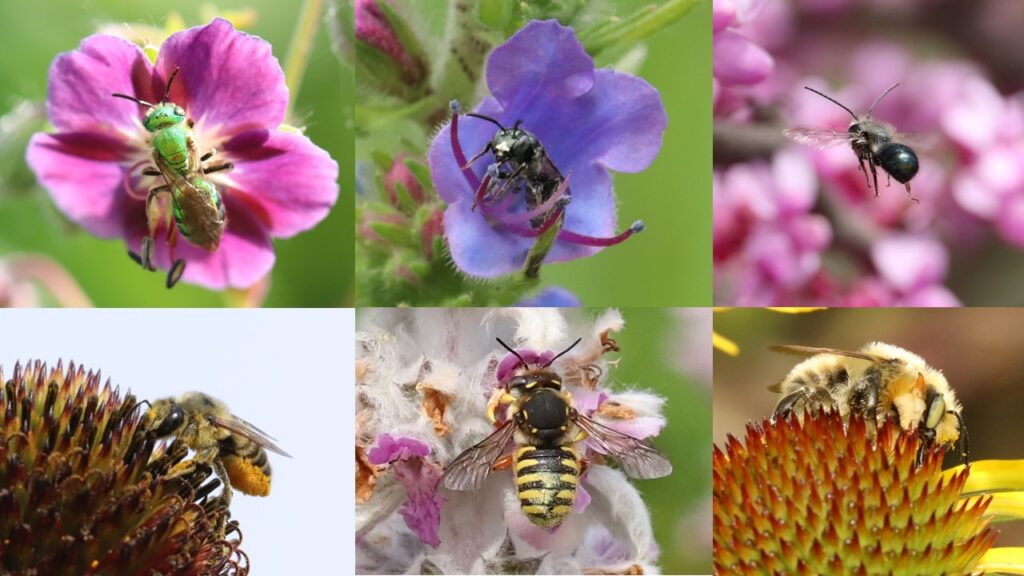
Save the bees! Plant a pollinator garden!
You’ve heard these messages. You’ve probably even incorporated plants into your garden specifically for bees and other pollinators. But have you actually noticed and understand the wildlife that you attract?
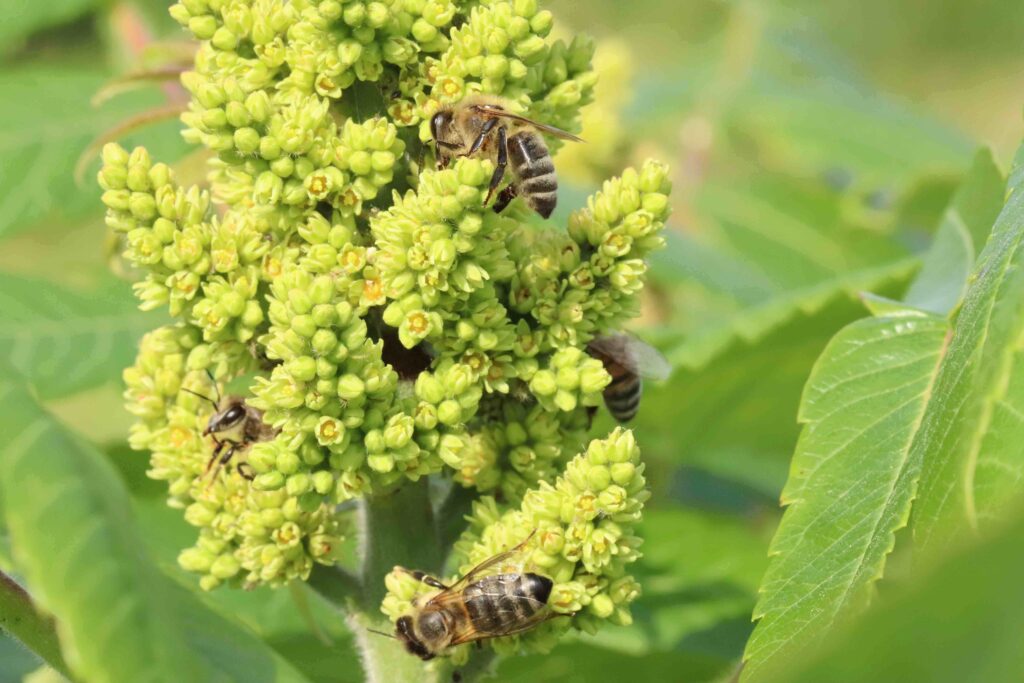
Honey bees on staghorn sumac flowers.
Maybe this is what comes to mind when you think of bees? While honey bees are important pollinators, they are a non-native species in our area. They are just one species of insect in your flowers right now. Let’s take a look at some native insects in your flowers.
Flies that look like bees:
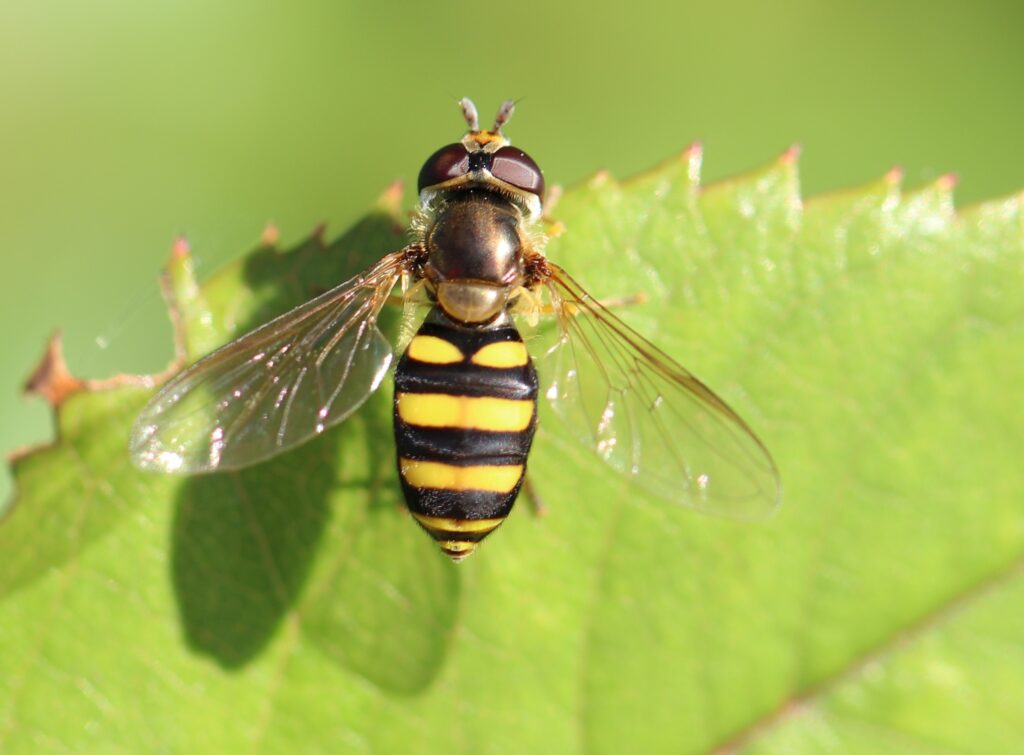
Long-tailed aphideater on rose.
This is a pretty common tactic. Many flower-associated flies have black and yellow banding on their abdomens. They may trick other animals, but a smart human can see the tell-tale signs: BIG eyes, short antenna that are close together, and wings that are spread across their back (not folded, like in most bees). These flies are on flowers to get nectar. Although not hairy like bees, they do pollinate and they can control plant-damaging insects.
Flies that look like wasps:
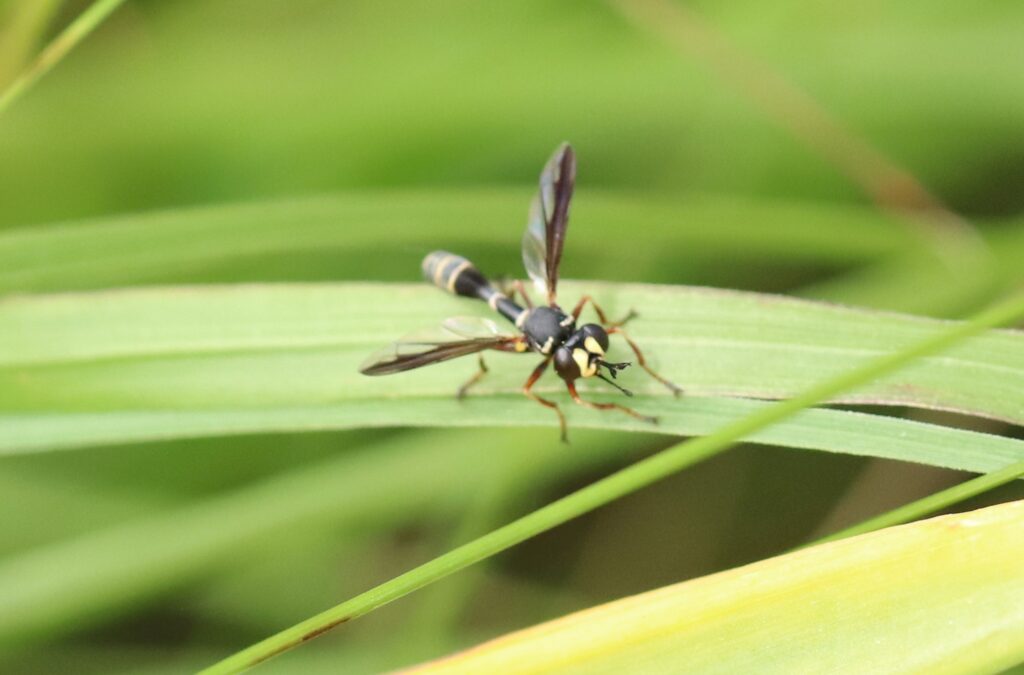
Wasp-like fly Physocephala marginata on Panicum.
The thin abdomen on this insect made it look like a wasp, until I saw those big eyes and tiny antenna. This thick-headed fly is a parasite of bees. The flies intercept the bees mid-air and use their abdomen like a can opener to pry open the segments of the bee’s abdomen and deposit an egg.
Bees that look like wasps
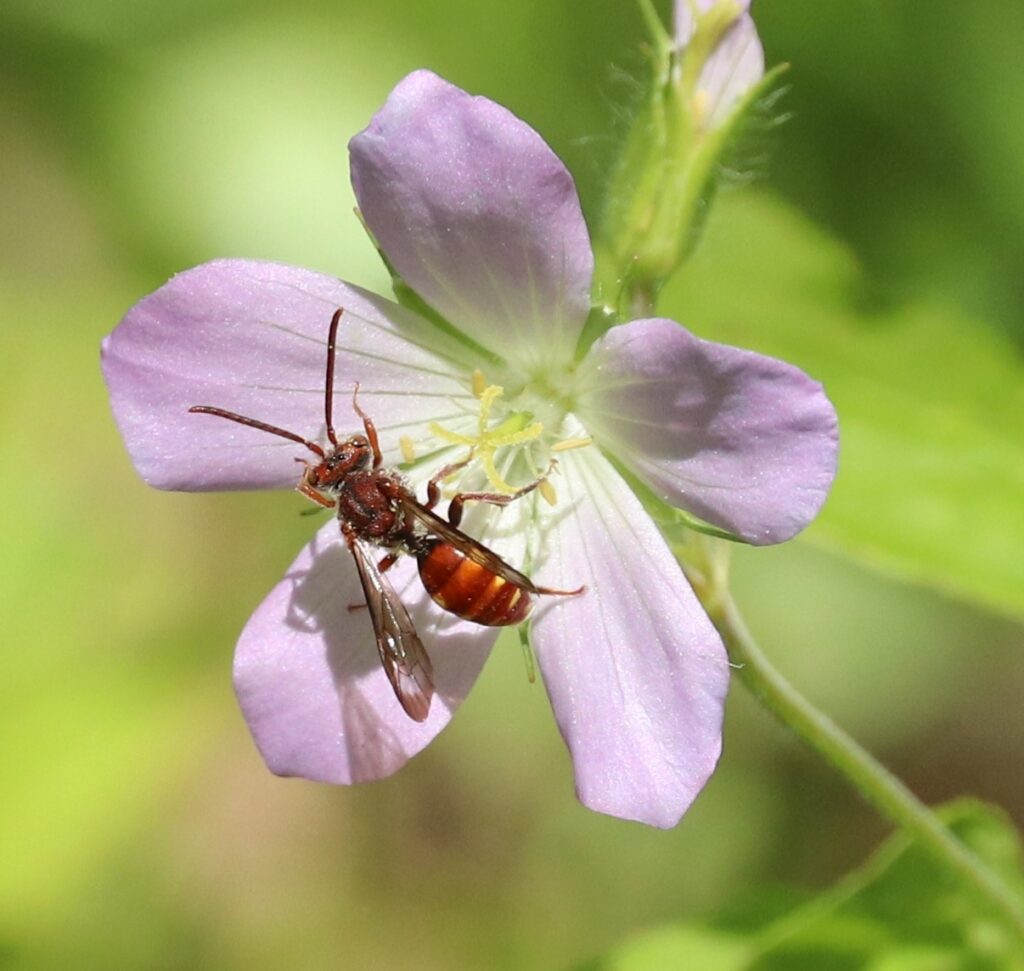
Nomada bee on wild geranium.
We think of bees as hairy, flying teddy bears of sorts. But, some bees are parasites of other bees. Since most of our bees are ground-nesting, a typical female spends her day building a nest cell in the ground, gathering pollen to put in the nest cell, then laying an egg on her ball of pollen. The parasitic bees are typically closely-related to the bees that they parasitize. She lingers around the nest site and waits for the female to leave. The parasite then enters the nest, lays an egg in the nest cell, then exists. She may destroy the host egg, or more commonly, the larva that hatches from her egg will devour the host larva. And just when you think it can’t get any weirder…
Beewolfs
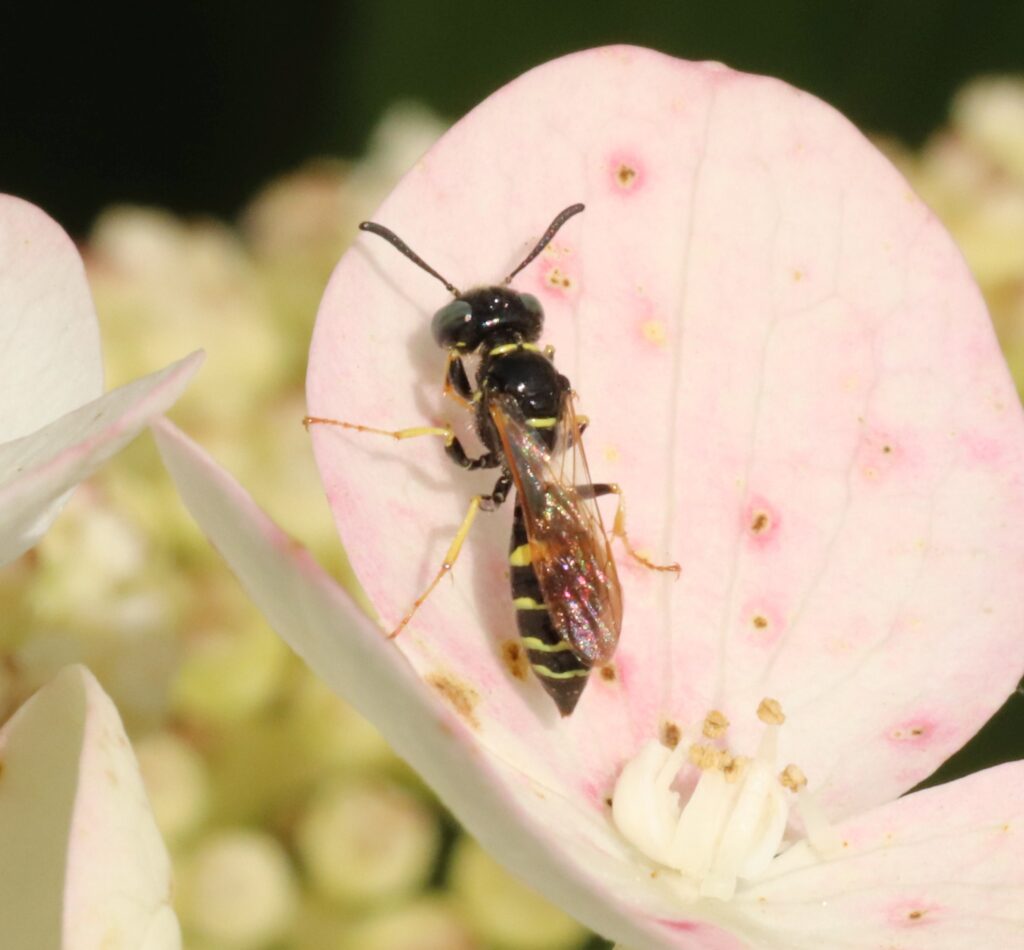
Beewolf Philanthus politus
These are bee-hunting wasps that hang out in flowers to wait for their prey. Females sting the bees to immobilize them, then take them back to their nest and lays eggs on the bee, just like the bee does with pollen (bees are vegetarian wasps, in essence).
So many bees

The diversity in size and appearance is staggering. If you spend time with bees, you start to recognize them. Clockwise from top left: green sweat bees are generalists, visiting many plants for pollen and nectar; tiny, stem-nesting carpenter bees; chunky blue orchard bees are important for early spring pollination; leaf-cutter males can look like teddy bears with manes of hair on their front legs; burly male “wool carder” bees that patrol their territory to keep all other pollinators out except for females who collect the hair from Stachys to line their nest; female leaf-cutter bees have characteristic pollen-collecting hair on the bottom of their abdomens rather than their hind legs.
Flowers
Take note of which flowers attract the most bees. For total abundance,I’ve noticed that native plants in the aster family are the most attractive to bees seeking pollen. So far this season, that’s been coreopsis, Echinacea paradoxa, Philadelphia and common fleabane, Rudbeckia and Heliopsis.Apart from aster family members, flowers that are shallow or even better, with reflexed petals, seem to attract the greatest diversity. Early in the season, rose-family woody plants were humming with native bees: raspberry, plum, apple, pear, and peach. Flowers with a tubular shape, like hosta flowers, seem to exclude most pollinators.
I encourage you to sit among your flowers and watch the insects closely. It will give you an appreciation for the role you have as a gardener. The message of planting for pollinators will become very real when you see the wild world in your garden! And if you are already interested in pollinators, this exercise will give you a chance to collect data and plant flowers that are the most popular for our insect friends.




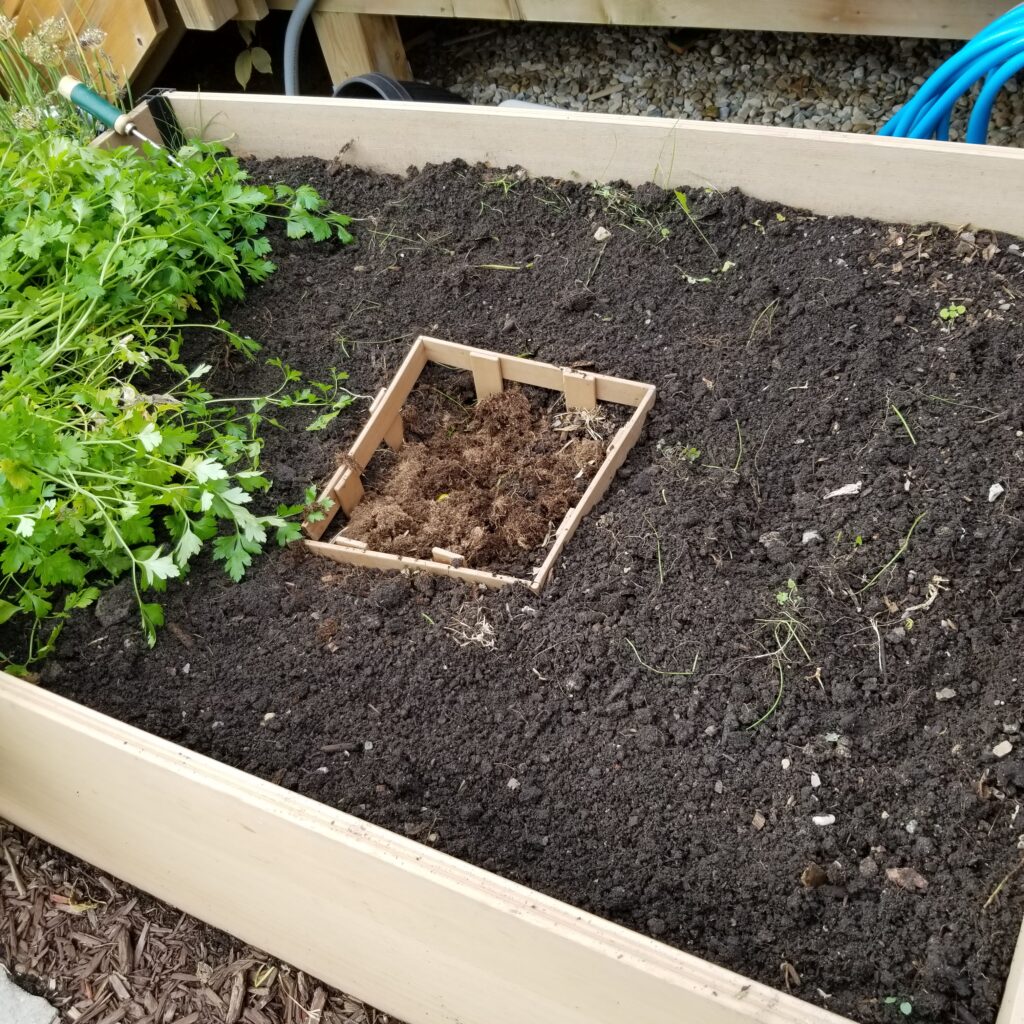
About The Author: Amy Turnbull
Scientist, researcher and professor at Fanshawe College. Avid grower of edibles in her home garden.
More posts by Amy Turnbull